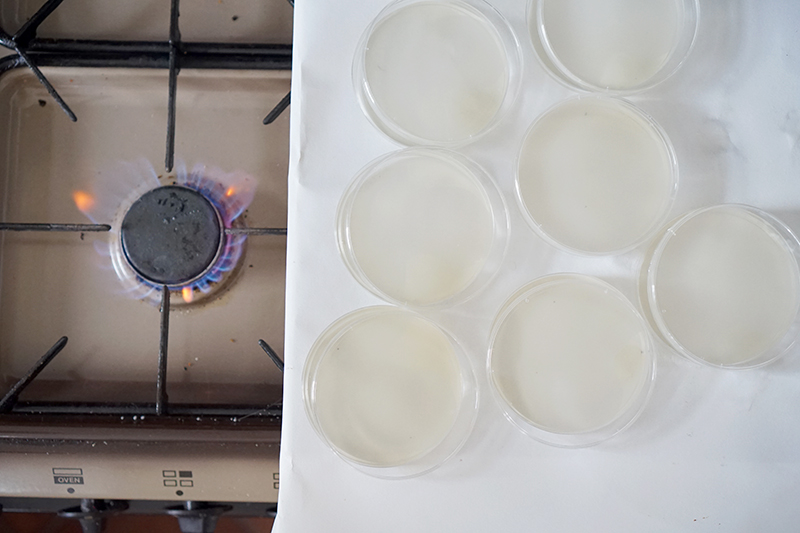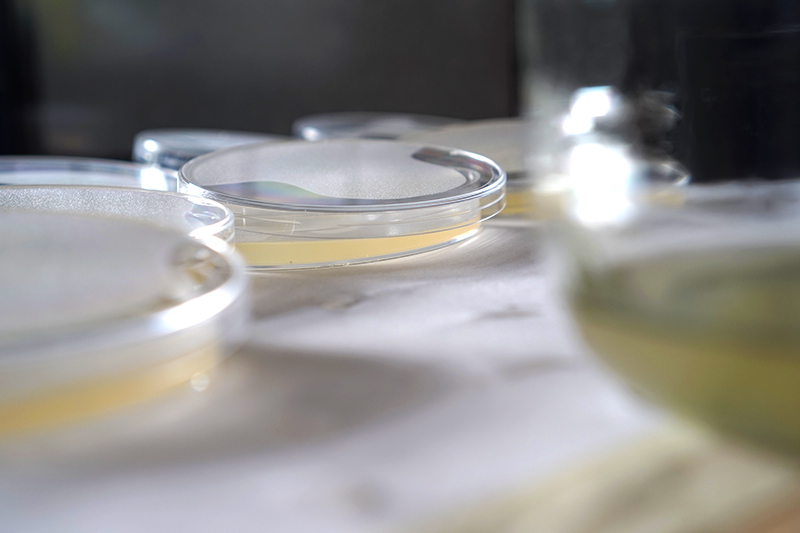6. Isolating Colonies
In order to get samples ready for sequencing, we need to make sure that we have a pure colony, only made up of the endophyte we want to examine. Often, when culturing from plants, you will find that many different types of microbes will grow from the same source. Some can be bacterial and will grow along the plate underneath the fungus, obscuring your results. So, in order to avoid this we will need to do some subculturing.

PROTOCOL
You’ll need:
—A Flame
—Inoculating loop or Tweezers
—Agar plate with microbes growing on them
—A Fresh agar plate
—Magnifying glass or some other kind of magnifier
Instructions
—Wipe down the surface you’re going to be working on and ignite your flame.
—Have a look at your microbial growth and see if you can identify a good place to take a sample from.
—There are two separate methods for obtaining a “pure” colony depending on if you want to work with fungi or bacteria.
—If you’re culturing fungus, you’ll want to take spores to grow from and set them in the centre of the fresh agar plate. This will give the mycelium space to grow, and you’ll be able to see zones of differentiation over the course of its growth.
—Bacteria are different, because they are so small and so tightly packed together we need to use a dilution method called streaking. This entails the systematic spreading out of microbes across the plate in a very precise manner in order to encourage the growth of isolated colonies.
—Sterilize your tweezers/loop by passing them through the flame. Wait for them to cool before touching them to the sample.
—Pick some material from the surface of the colony of interest, tweezers are good for getting spores, while simply touching the loop to bacteria is enough. Bacteria are “stickier” than fungal spore so they will transfer easily.
—Hold the fresh agar plate close to the flame and open the lid just enough to allow the tweezers or loop in. If you have spore, try to place it in the centre of the plate to allow it to grow outwards in all directions. If you have bacteria, smoothly wipe the loop across the plate in one continuous sweeping motion.
Precautions
— Do the isolation in a flow hood
— Take a colony, streak out on a plate,
— Fungus is hard to isolate
— Fungus, use tweezers, roast them, surface of the plate, they are bigger than bacteria, so you can see them
